This blog is for all Instrumentation and Control Engineers Find Knowledge about IC Field and more.
Friday, June 26, 2020
List of industrial Software
Monday, June 1, 2020
Engineering Software details
Thursday, May 14, 2020
Friday, May 8, 2020
Thursday, May 7, 2020
Instrumentation Design Engineering courses details
2. https://www.monarchengg.com/smartplant-instrumentation-intools-training-services.htm-COURSE FEE-40,000/-
3. https://hexagonppm.com/offerings/training/virtual-training/smartplant-instrumentation-virtual-training
4. https://www.oilandgasclub.com/course/
Monday, May 4, 2020
What softwares should an Instrumentation & Control Engineer know about?
Elecdes Design Suite
2- Micro controller Programming such as Codevision AVR, Bascom AVR , PIC Basic Pro...
Saturday, May 2, 2020
Application for engineers
http://www.engineers-excel.com/Apps/Apps.htm
https://www.excel-easy.com/
Excel VBA For Complete Beginners : https://www.homeandlearn.org/index.html
Wednesday, April 29, 2020
Useful Websites & Resources
Engineering Resources
ICEWEB : A Massive Vault of High Quality Instrumentation, Control, Electrical, Fire & Gas, Hydraulic Instrumentation, Safety Instrumented Systems and Instrumentation Engineering Technical Information
https://iceweb.eit.edu.au/
http://instrumentationportal.com/
https://instrumentationtools.com/
Instrumentation Socratic : Amazing Resource for Control & Instrumentation Engineers - Under Creative Common Attribute License by Tony R. Kuphaldt
Lessons in Electrical Circuits : A free series of textbooks on the subjects of electricity and electronics by Tony R. Kuphaldt
Bash Academy : Learning Bash Programming
Free Books & Documentations
Library Genesis: Download any book for Free
FreeTechBooks: Database of Free / Open Access Online Computer Science Books, Textbooks, and Lecture Notes
Free Document Hosting : Read the Docs, Create, host, and browse documentation.
Business Resources
Docracy : Open Legal Documents Provided and trusted by millions of people
Design & Website Resources
humaaans : Mix-&-match illustrations of people with a design library
ImgBB : Hosting photos on websites or sharing them with links
Mixkit: Extraordinary Free HD Videos
undraw: Free Extraordinary Illustrations
Manypixels : Free Extraordinary Illustrations
Flaticon : Free Icons
Productivity Tools & Software
Productivity Tools & Software
Services denoted with “ Free “ either are completely free or the majority of their functionalities are available for free users.
Engineering & Code
Sublime Text Free
Tableau
Pycharm
IntelliJ
Snippetslab
Matlab
Mathematica
Labview
DataGrip
Excel
Open Source & Free
BitWarden Free
Sublime Text Free
Andco Free
Learning Library
Coursovie
Teamtreehouse
Lynda
Linkedin Learning
Coursera
Udacity Udemy Skillshare
Freelance Lift
Edx
Productivity
YouCanBook.Me
Calendly Free
Slack Free
BitWarden Free
1Password
TeamViewer Free
Alfred3 Free
Zoom Communication Free
RescueTime Free
Evernote Pocket Free
Cloudapp
Design & Drawing
AutoCAD
Autodesk Fusion 360
EdrwaMax
Website Development
Squrespace
Webflow Wordpress
Adobe XD Free
Legal Matters
Wave Free
Docracy Free
Video & Audio
Handbrake Free
Camtasia
Screenflow
Snagit
Project Management
Asana Free
Basecamp
Wunderlist Free
Trello Free
Xmind
Airtable Free
File Management
Box
Mega Dropbox
Pcloud
Tresorit megaSync Free
Images, Icons & Logo
Unsplash Free
Thursday, April 16, 2020
Industry 4.0
Such like we are having up-gradation in our mobile Software (Android 4.0 to 10.0), Laptop (Windows 7 to 10.0) & also on Internet From 2G to 4G or further to 5G. This is because we are basically trying to overcome the Lag/Errors/Disadvantages.
In this article, I will describe how this generation takes place in Industrial Automation.
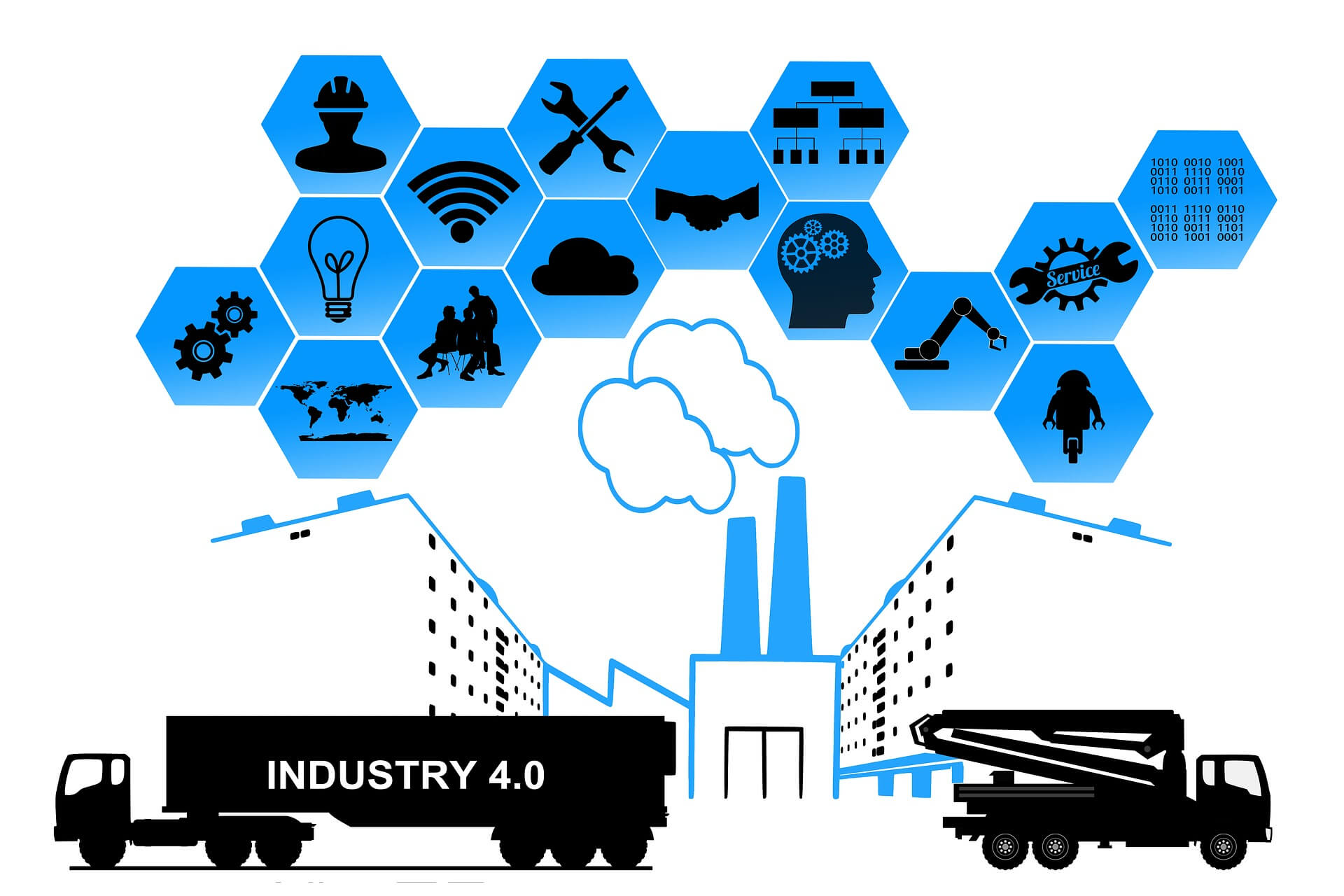
A History of Industry 4.0
- Industry 1.0 (1784) – Water/ Steam Power
- Industry 2.0 (1870) – Assembly Line Worker
- Industry 3.0 (1969) – Computer & Automation
- Industry 4.0 (2011) – ?
- In 1784 we were in the first stage of Industry where the operation of the power sector was controlled using Relays and Human Feedback.
- In 1870 we were in the second stage of Industry where the first production line with the help of Electrical Equipment, we started to produce a quality product on the fast track.
- In 1969 we were in the third stage of Industry where with the help of IT infrastructure and Instrumentation Automation we started to use and control field equipment’s from the Control Room.
What is Industry 4.0?
It is said that now “ The World is on your Finger Tip”, it is said so because we are in 21 century call a Taxi, Food, Groceries, Other Household Services within a minute by just clicking on the mobile app.
Suppose we started these advance IT structure in the field of Industry then you can imagine what will be the scope for our Industries worldwide. Hence we started and intrudes Industry 4.0, which we utilized by advance Cloud computing with firewall protection, Mobile Apps & Network-based Operation.
These all are having its best advantages which are highlighted below.
- Live Status Update from Field
- Shift Report without Editing
- Network Controlling from anywhere
- Robots for Operation
- Outcome Income
- The efficiency of product O/P
- Time-saving
- Quality product
- Minimum human Power
- Security
Industry 4.0 Example
Let’s know in deeply with the help of an example:
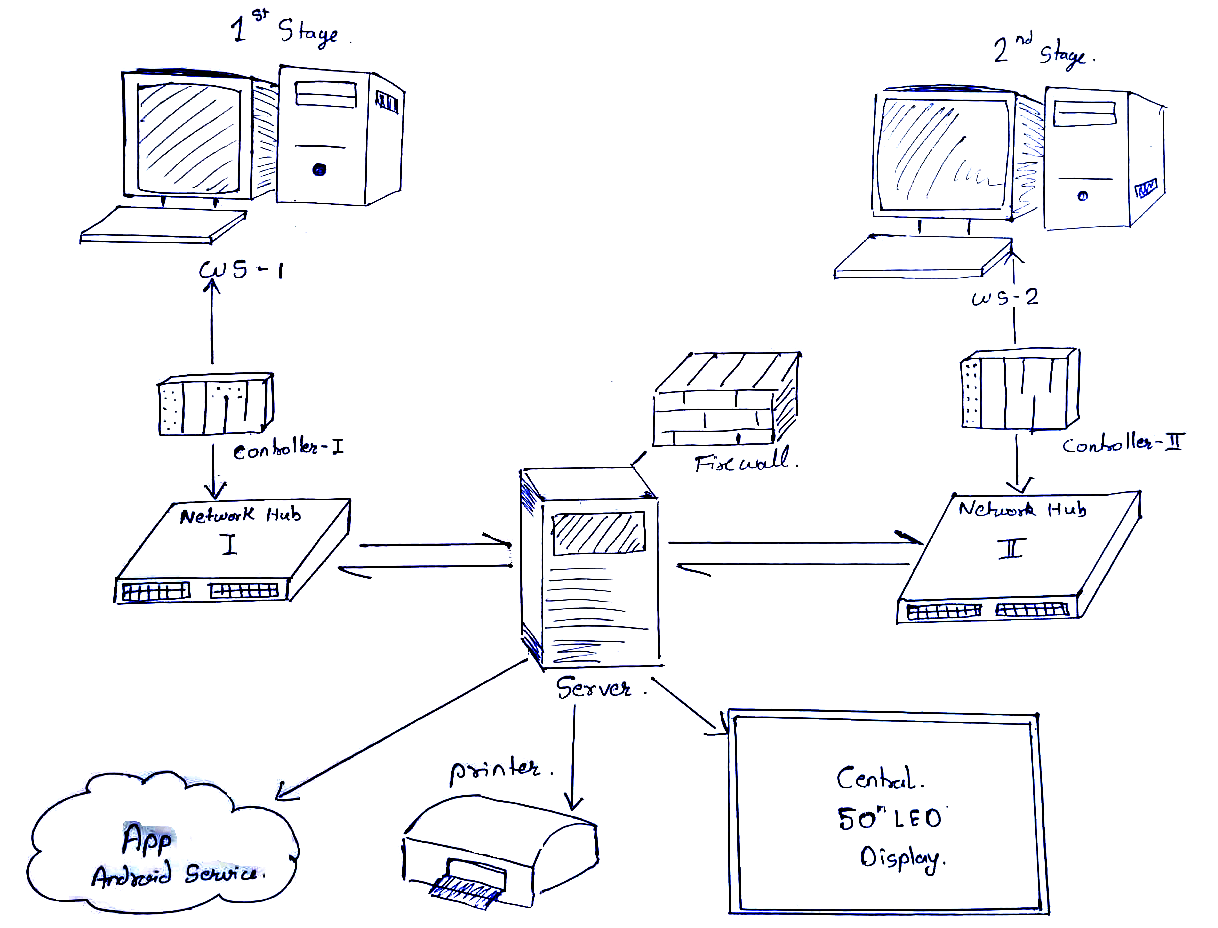
Abbreviation:
WS- Work Station
Controller – DCS
As we can see in the diagram above there are 2 sections of the single product. suppose the Vehicle chassis has been made in the 1 st stage and send it to the painting shop which is 2nd stage of the Production line.
We are operating the section individually with the help of 2 DCS, One for each Section with redundancy. The 2 individual operators operate the section and these 2 sections are centralized in the main control room where with the help of 1 stage production we need to increase the process of 2nd stage or lower the speed of production. This decision is taken by the Central Control Room supervisor.
This is because we don’t want to sit the operator ideally or else not to have a load of heavy work which will lead to affect the product quality. Also these all shift reports viewed by the Manager with the help of Network computing.
Here we connected a printer and limited mobile access to the company employee for security access, they can change the parameters of can access to the new users with access key provided by the Company.
Whereas you can see the energy meter which has been connected with the network these will provide all the necessary details of consumption of the power in each stage for the production of the product. There is nothing but the evolution in the industry that has been taking place in the new industry or some are upgrading their existing system with the new form industry 4.0 Standard.
Coal based fuel feeding system
The Flue Feeding System Consists of the following Parts:
- Crusher
- Bucket Elevator
- Hopper
- Screw Feeder
- Primary Air Fan (PA Fan)
Crusher
A crusher is a machine designed to reduce large Coal into smaller Coals, gravel, or rock dust. Crushers are machines which use a metal surface to break or compress materials.
Mining operations use crushers, commonly classified by the degree to which they fragment the starting material, with primary and secondary crushers handling course materials, and tertiary and quaternary crushers reducing ore particles to finer gradations.
Each crusher is designed to work with a certain maximum size of raw material, and often delivers its output to a screening machine which sorts and directs the product for further processing.
Typically, crushing stages are followed by milling stages if the materials need to be further reduced. Additionally rock breakers are typically located next to a crusher to reduce oversize material too large for a crusher. Crushers are used to reduce particle size enough so that the material can be processed into finer particles in a grinder.
A typical processing line at a mine might consist of a crusher followed by a SAG mill followed by a ball mill. In this context, the SAG mill and ball mill are considered grinders rather than crushers. Crushers may be used to reduce the size, or change the form, of waste materials so they can be more easily disposed of or recycled, or to reduce the size of a solid mix of raw materials (as in rock ore), so that pieces of different composition can be differentiated.
Crushing is the process of transferring a force amplified by mechanical advantage through a material made of molecules that bond together more strongly, and resist deformation more, than those in the material being crushed do.
Crushing devices hold material between two parallel or tangent solid surfaces, and apply sufficient force to bring the surfaces together to generate enough energy within the material being crushed so that its molecules separate from (fracturing), or change alignment in relation to (deformation), each other.
The earliest crushers were handheld stones, where the weight of the stone provided a boost to muscle power, used against a stone anvil. Querns and mortars are types of these crushing devices.
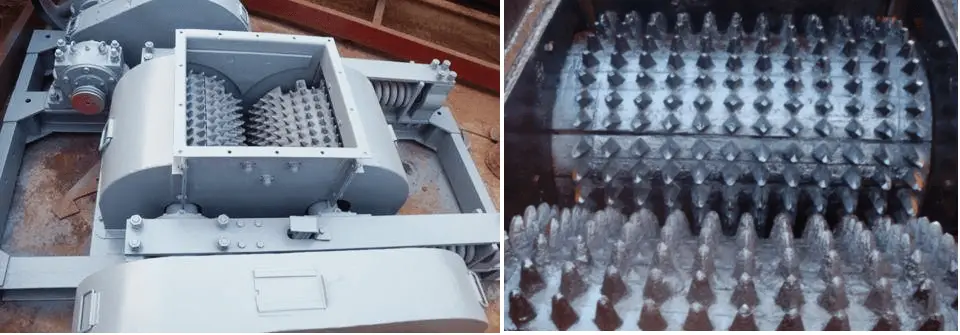
Bucket Elevator
The recycling bucket of bucket elevator scoops the materials up from the coal crusher with the help of belt conveyor, the bucket elevator elevate to the top with the conveyor belt or chain , flip down after top wheel, and poured material into the Storage Hooper.

Belt driving (The belt normally is rubber belt) of bucket elevator is installed at top and down transmission drum or the top and down idler drum. Chain driving (generally are two parallel transmission chain) is installed on the bucket elevator, at the top and down, there are a pair of drive sprocket.
At down and top, there is a pair of idler sprocket. Normally the bucket elevator is with shell to prevent the dust inside the bucket and also generated during delivery.
Bucket Elevator Animation
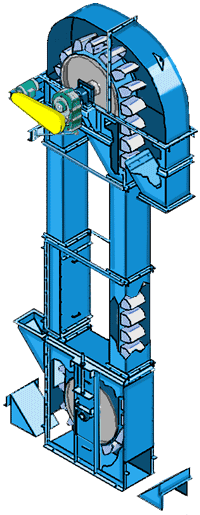
Hopper
In a mass flow hopper, all the material inside the hopper moves down the walls and exits. The flow is based upon a first-in, first-out principle and is uniform and reliable upon discharge. Moisture content, temperature, age, oil content, and solid levels must be regulated to ensure effective flow.

There are two types of hoppers, conical and wedge-shaped. The hopper shown below to the right is conical whereas a wedge-shaped hopper is a trough with a narrow slit, as shown to the left.
Conical hoppers must be steeper to promote the same amount of flow but wedge-shaped hoppers require a conveyer to collect the materials that exit from it.
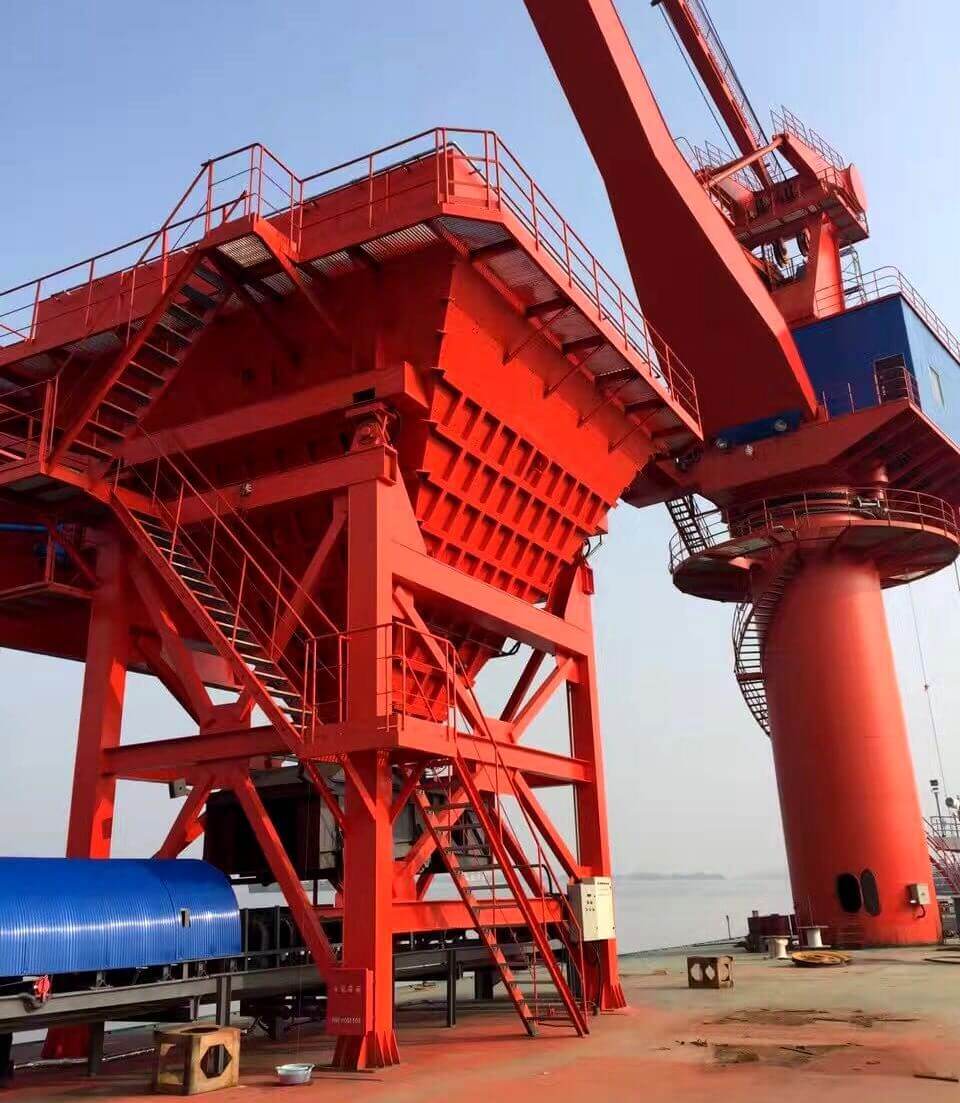
Screw Feeder
Screw conveyors are conveyor systems for bulk materials that are based on the operating principle behind Archimedes’ screw. The conveying element in these conveyors consists of flat metal shaped into a helix (screw spiral).
This helix rotates around the system’s longitudinal axis and conveys bulk material in an axial direction inside a stationary trough or tube (which simultaneously acts as a carrying element). The material being handled can be conveyed horizontally, diagonally, and vertically.
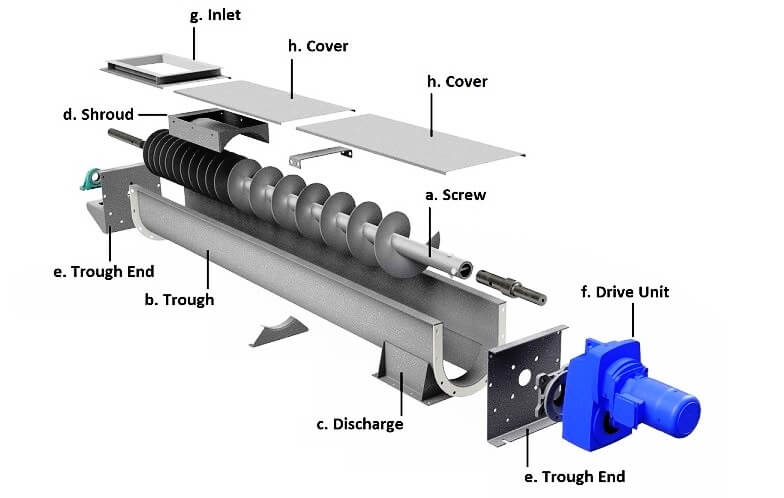
In addition, processing activities such as mixing, dewatering, and compression can be performed while the bulk material is being conveyed, and the latter can also be cooled or dried during the process. Screw conveyors feature a simple design, but are only useful for relatively short distances.
Also, due to the friction exerted by the bulk material inside the screw conveyor trough, screw conveyors require significantly more power than belt conveyors and bucket elevators.
Gravity, as well as the friction between the bulk material and the trough walls, works against the material’s rotation as effected by the screw. If there is a high filling level and the friction on the wall is low, the material will only rotate perpendicularly to the screw axis at the beginning of the screw, meaning that the screw will function as a simple cylinder and the material will not be conveyed.
Because of this, centrifugal force must be used to generate wall friction so as to be able to convey material vertically (this, in turn, requires high screw speeds).
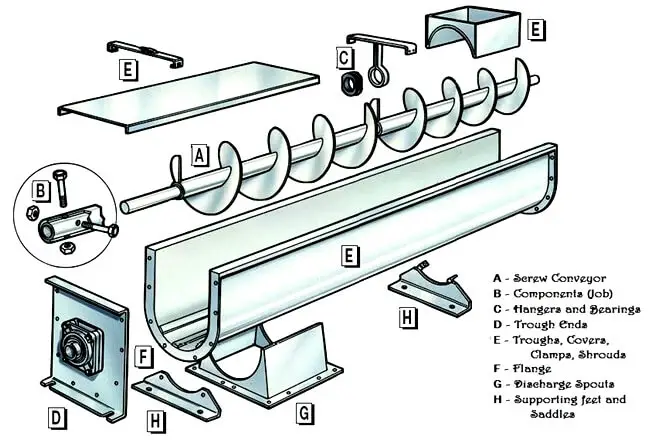
A system’s delivery volume depends on the screw’s speed, the inner and outer diameters, the degree of inclination, the level of filling, and the friction between the material and the screw.
The maximum delivery volume is achieved when the friction on the conveyor screw is low relative to the friction on the trough wall. If liquids are being conveyed, the delivery rate decreases and the level of wear increases, as the chambers are no longer completely separated from each other and backflow occurs as a result.
Primary Air Fans (PA Fans)
A key component of the thermal power generation plant is the boiler, which is also called as steam generator.
The essence of the thermal power generation plant is to create the steam in boilers or steamers; this steam is send at high pressure to a stationary turbine that generates electricity. The coal is first crushed into minute particles using equipment called pulverizes.
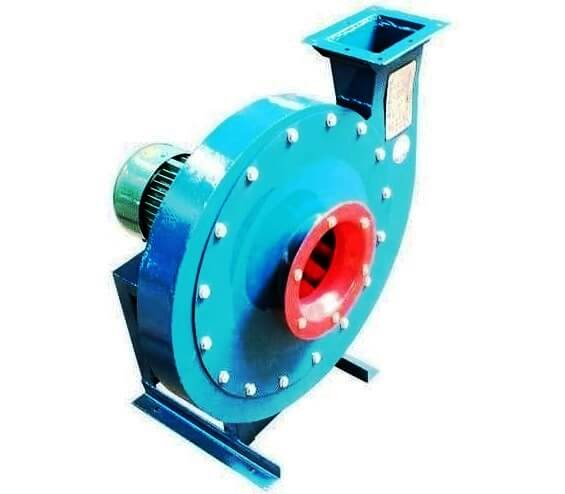
The main function of the Primary air fan or PA fan is to carry the pulverized coal to the furnace as fuel for combustion. This process is used to create the steam that is the primary process in the thermal power plant. In power plants, the PA fans supply air for conveying of the pulverized coal from coal mills to the furnace area.
These primary air fans produce a high pressure to push the coal and air mixture through pulverize into the furnace. The most common configuration of the draught fans used as a PA fan is the backward curved centrifugal fan.
In power plants the PA fans play an important role in supplying air necessary for fuel combustion and in the maintenance of furnace temperature.
The Setup of Coal Fuel Feeding System
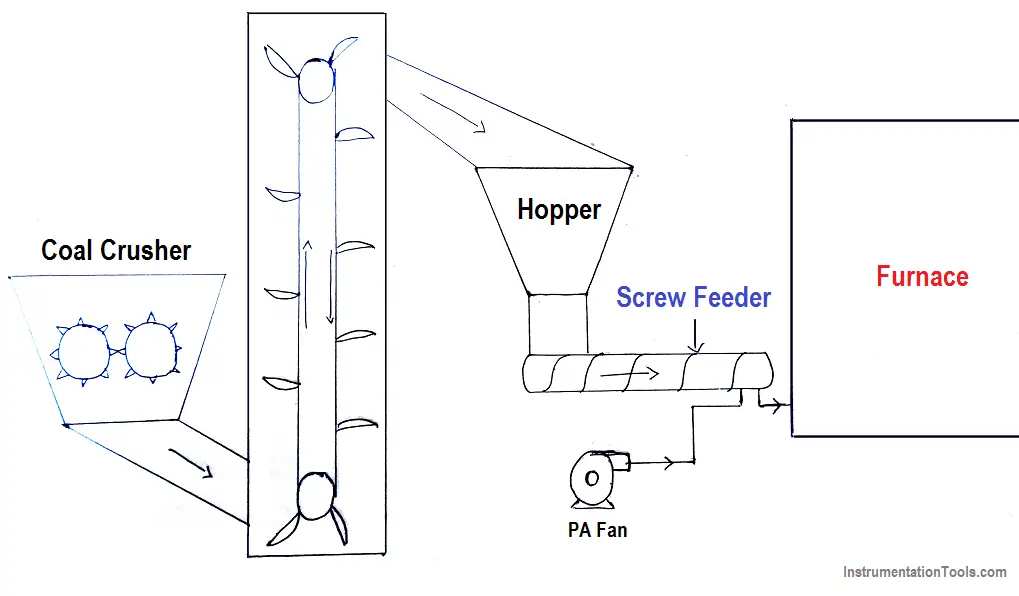
Author: Jadhav Amit R